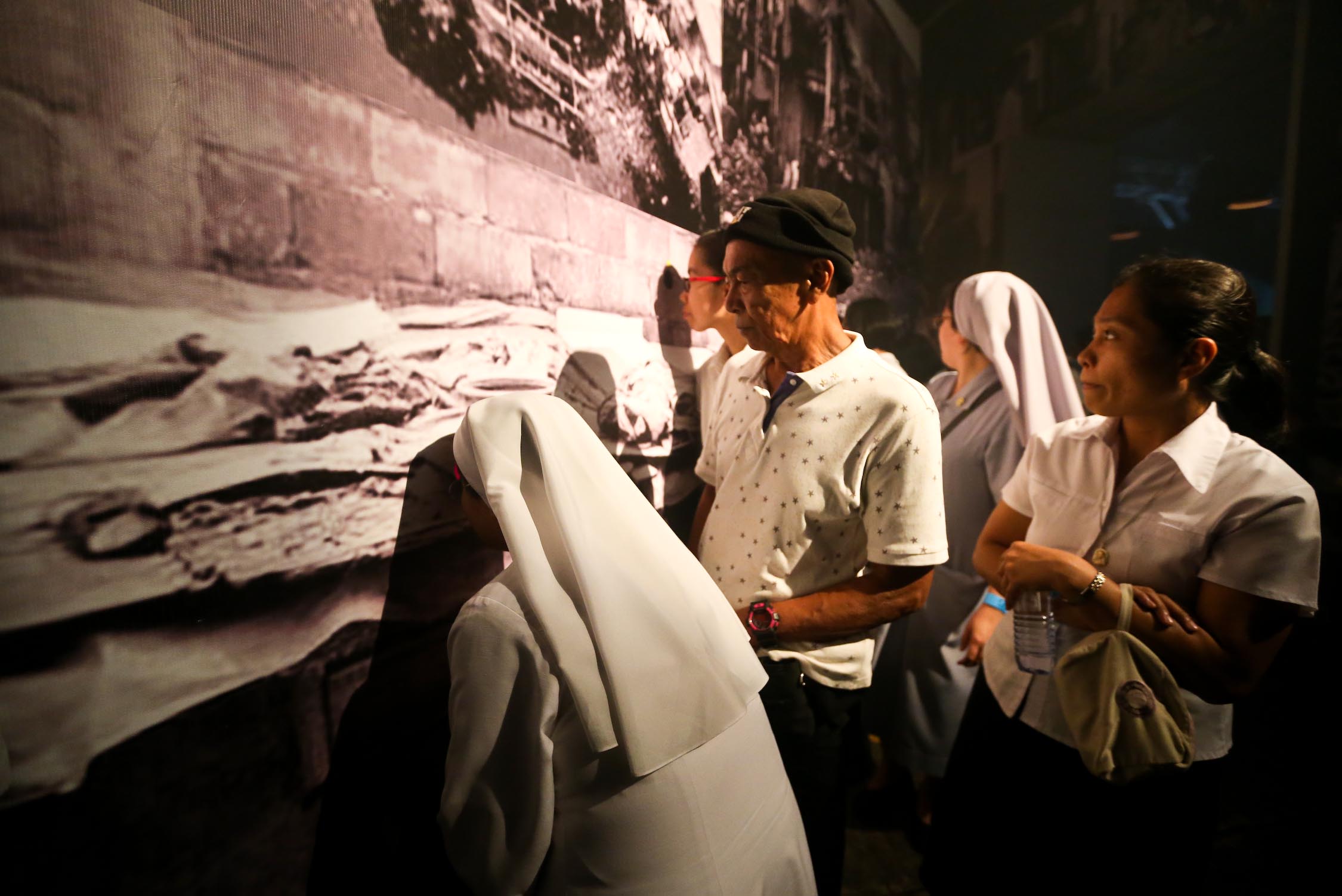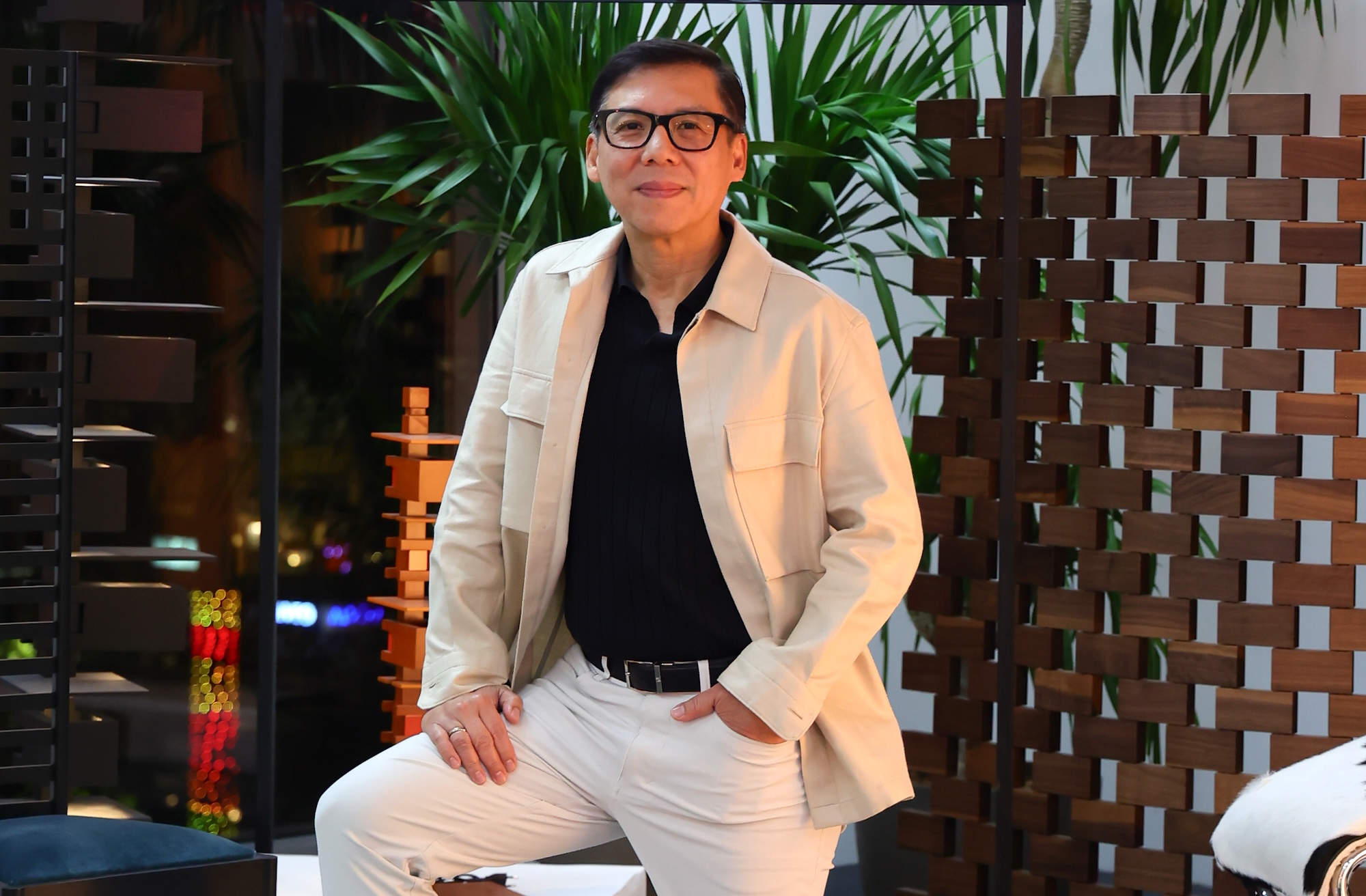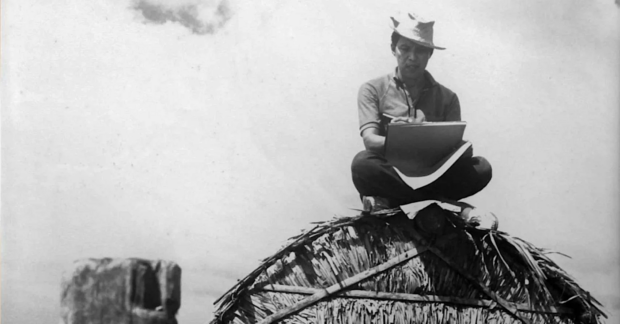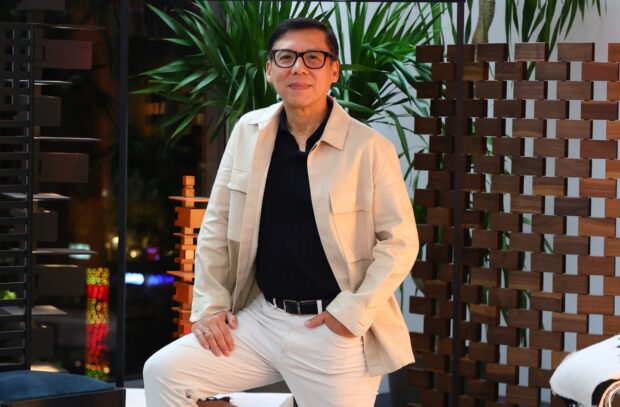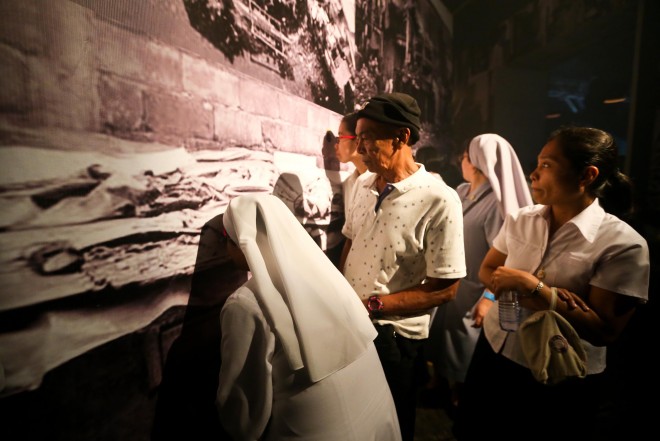
of False Dreams.LYN RILLON
The nine halls of the People Power Experiential Museum are dark, by intention.
Light is focused only on the exhibits, leading the visitors from one memory to another. It’s symbolic of the illumination the museum is trying to cast on the events of Martial Law and the 1986 People Power revolt.
It is directed mainly to a new generation of Filipinos, which is quite a challenge.
The Edsa People Power Commission (EPPC) has come up with a thoroughly modern and symbolic solution.
Constructed on the Armed Forces of the Philippines grounds at Camp Aguinaldo, Quezon City, the Experiential Museum takes the voluminous collective memory of the 1970s and ’80s and condenses it into nine halls, each with a unique thematic exhibit, ranging from the Hall of Pain’s circus-style depiction of torture to the Hall of Forgotten Martyrs’ elocution-style remembrance of the unremembered fallen.
It first ran Feb. 25-26 as part of the 30th People Power anniversary, and will reopen in April at QCX interactive museum in nearby Quezon Memorial Circle.
The Experiential Museum, with its eye-opening combination of live actors and special effects, presents an innovative, attractive way of depicting the Marcos era and its end.

For young audience
Here’s what parents should know about it:
1) It is for the kids: All the bells and whistles at the Experiential Museum are intended for a young audience.
“The primary targets are the millennials who were born after, those who are enjoying the freedom won in 1986,” explains Celso Santiago Jr., assistant secretary for special concerns from Malacañang’s Presidential Communications Operations Office and EPPC spokesperson.
“We just wanted to talk to the young, and we realized we can’t do this anymore by pictures, text or lectures, because they don’t like being talked to. They liked being talked with,” he adds.
The idea came up first last September and President Aquino approved it in December.
That idea has caught on—the vast majority of the Experiential Museum’s visitors are indeed young Filipinos, many of them schoolchildren.
But they are not the only ones. Adults and senior citizens braved the long lines to take part in the experience.
That works for the EPPC as well. “We honor also those who stood at Edsa, who are also passing the torch to their children and grandchildren,” Santiago notes, adding they hoped to have attracted over 6,000 visitors in the Museum’s limited two-day run.
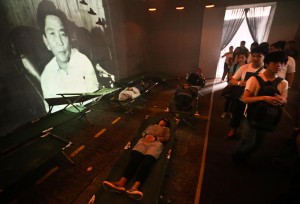
Immersive
2) It is immersive: The Experiential Museum uses a dramatic mix of actors to produce performances and audiovisual effects to transport visitors to an era three decades ago, all in a 40-minute tour.
In one exhibit, the suffering of Filipinos is juxtaposed with peephole views of a live, simulated Imeldific party.
In another setup, in an intense, hair-raising atmosphere, actors playing martyrs Evelio Javier and Macli-ing Dulag, among others, stand and recount how and why they died.
Perhaps the most disturbing is the Hall of Orphans, where only a barbwire fence separates visitors from the child actors who plead to know where their parents—the “forcibly disappeared” or “desperacidos”—are.
Visitors will see for the first time the unedited video of Sen. Ninoy Aquino as he is led from the plane to his death on the tarmac—that Zapruder film-like sequence that leaves a lump in the throat to this day.
Down another hall, confetti falls from above as they used to during the Cory Aquino parades.
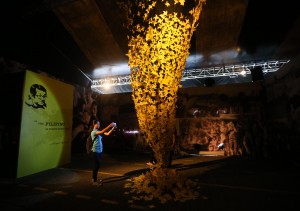
Parents may need to counsel their children if they display strong emotions due to the provocative and emotional nature of these exhibits.
3) It is illuminating: At the start of the tour, visitors are told that what happened on Edsa in 1986 is very different from the traffic-clogged, mall-lined highway they know today.
It is clear that most of the millennials walking through the Experiential Museum have virtually no idea of what it was like during the Marcos regime. They approach the exhibits with curiosity and a bit of confusion.
Their faces show disbelief that such cases of torture really happened, as the exhibit’s ringmaster yells in Filipino: “That is why I hate you! Because you know nothing.”
The students can’t seem to wrap their minds around the sheer number of victims in the Hall of the Lost. For most of them, this is the first time they are hearing all of these in detail.
Parents may need to explain the context of these presentations beyond the sleek theater. The spectacle draws them in; the substance is what stays with them.
The millennials react to the exhibits as millennials do: They take out their smart phones and start photographing everything. This, after all, is how they remember anything. Hopefully, they will remember what they see here.
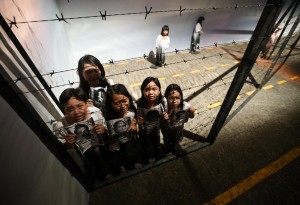
4) It is going to return: The Experiential Museum will be back in a different location and form.
When the EPPC was on the initial stages of planning, its biggest concern then was simple: Would people come?
The answer came soon enough, as the registration lists became full and walk-ins lined up outside Camp Aguinaldo’s Gate 5.
The people came.
“When we saw the people’s reaction, through traditional media, social media and word of mouth, we were really overwhelmed,” Santiago says. “We were thinking of extending, but because of budgetary constraints, we really couldn’t muster the resources needed to extend.”
The Quezon City government has come to the rescue. The Experiential Museum will move to the QCX (Quezon City Experience) interactive museum next month.
This will require making the whole thing smaller and digitizing the actors to reduce the operating costs.
“But it will be the same experience,” Santiago promises.

5) It will be here to stay: According to Santiago, QCX will house the Experiential Museum for approximately two years, while the 1986 Memory Museum—a permanent structure—is built right behind the People Power Monument.
Then the Experiential Museum will become the Memory Museum’s permanent first-floor fixture, so that it can be experienced by future generations of Filipinos.
When it makes the move, the Experiential Museum will expand back to its original dimensions in its new home. When this happens, parents can bring their children there at any time.
This is to make permanent all the lessons that the Experiential Museum—and by extension, the People Power Revolution
—sought to teach.
“The best part,” says Santiago, “is talking to the young people when they go through. You see that you’ve touched their feelings and made them realize that the freedom they have now is something precious and they want to be worthy of the sacrifices. Young people should value the freedom that they have, and use it to do something for the country.”
RELATED VIDEO

